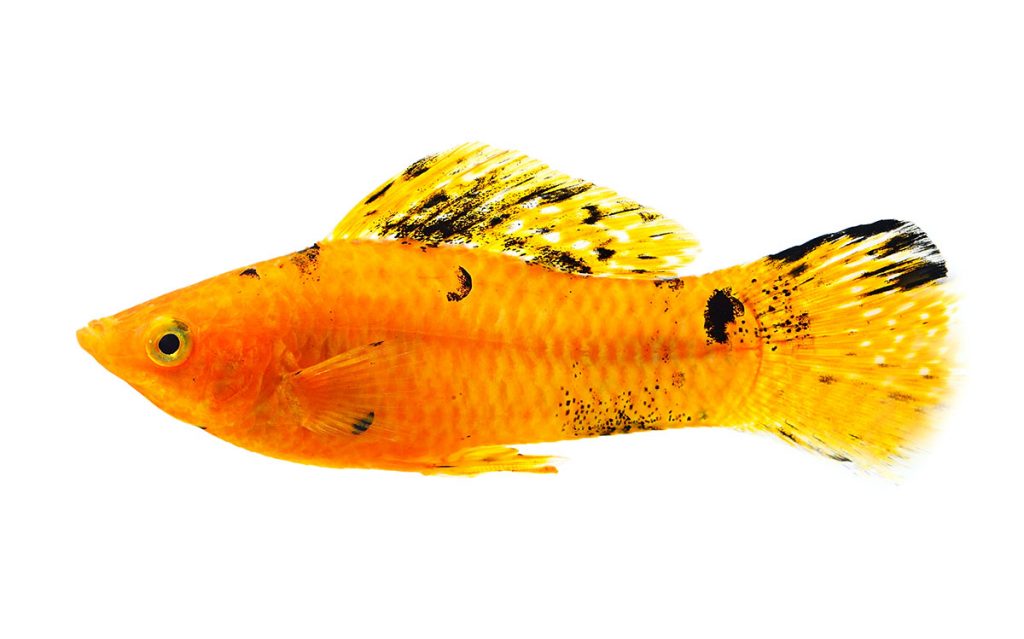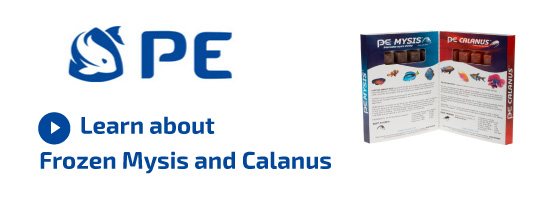Mollies Species
Mollies are a group of livebearers in the family Poeciliidae. They are very closely related the Swordtails, Platies and Guppies. All mollies fall into a single genus, Poecilia, which contains approximately forty species. Only a handful of molly species are common in the aquarium trade. Mollies have been bred in captivity for several decades, with several domestic strains having been developed. They are very popular aquarium fish due to their bright colors, array of patterns and sociable nature.
Mollies come in a variety of colors, with many different strains being sold in pet shops. Mollies can be found with many different fin types, as well as countless different colors and patterns. One of the most commonly encountered molly in the pet store is the Black Molly (Poecilia latipinnia). Other commonly encountered mollies include the Gold Dust Molly (Poecilia sphenops) and the Platinum Lyretail Molly (Poecilia velifera).
Biology
Mollies are native to much of the Americas where they are found in many different river drainages throughout their native region. Mollies can be found in saltwater, brackish and freshwater. Mollies are sexually dimorphic, with male mollies being on average significantly smaller than females. Male mollies typically reach 3” (8 cm) while females can reach 4.5” (12cm).
Like all livebearers in the Poeciliidae family, mollies give birth to live young. Male mollies have a modified anal fin that is used for mating. Female mollies can give birth to live young approximately every thirty days. The young are called fry and are born fully formed resembling the parents.
Captive Care
Mollies can make great aquarium inhabitants, provided their husbandry needs such as diet, water quality and tank space are met. Mollies are considered a little more active and boisterous than other livebearers such as the platies and guppies, so may do best with slightly larger tankmates with the same disposition.
Mollies can tolerate a wide range of water temperatures and can do well at a range of 64F (17C) to 84F (28C), however they tend to prefer the middle of that range.
Mollies do well in more boisterous community tanks, with fish such as barbs and less aggressive cichlids. As with most live bearers, it is generally suggested to keep mollies at a ratio of two to three females for every male. The males can become quite boisterous during courtship, so having several females can help spread out the male mollies advances.
Suggested Piscine Energetics Products
We suggest a diet based on Piscine Energetics Frozen Mysis, Piscine Energetics Frozen Calanus, Piscine Energetics Freshwater Pellets (1mm) and Piscine Energetics Freshwater Flakes.
What People Say
After feeding my seahorses your mysis for about 3 months; they are fat and happy!!! they give me baby seahorses (at least 300 ) each 14 days... So I'm very satisfied of your mysis.The frozen mysis is about 70 per cent of their diet.
Yvan Charbonneau Quebec
I am keeping these Indian mudskippers -- very cute -- about 3-4 inches long. I've been feeding them frozen bloodworm, and decided to try them on mysis. I feed them in a "shallows" in the 150 I have set up for them. The minute the mysis hit the water they were on it, frozen and all. They gorged until their little bellies were almost bursting. I have yet to see an aquatic creature that does not go absolutely nuts over PE Mysis.






